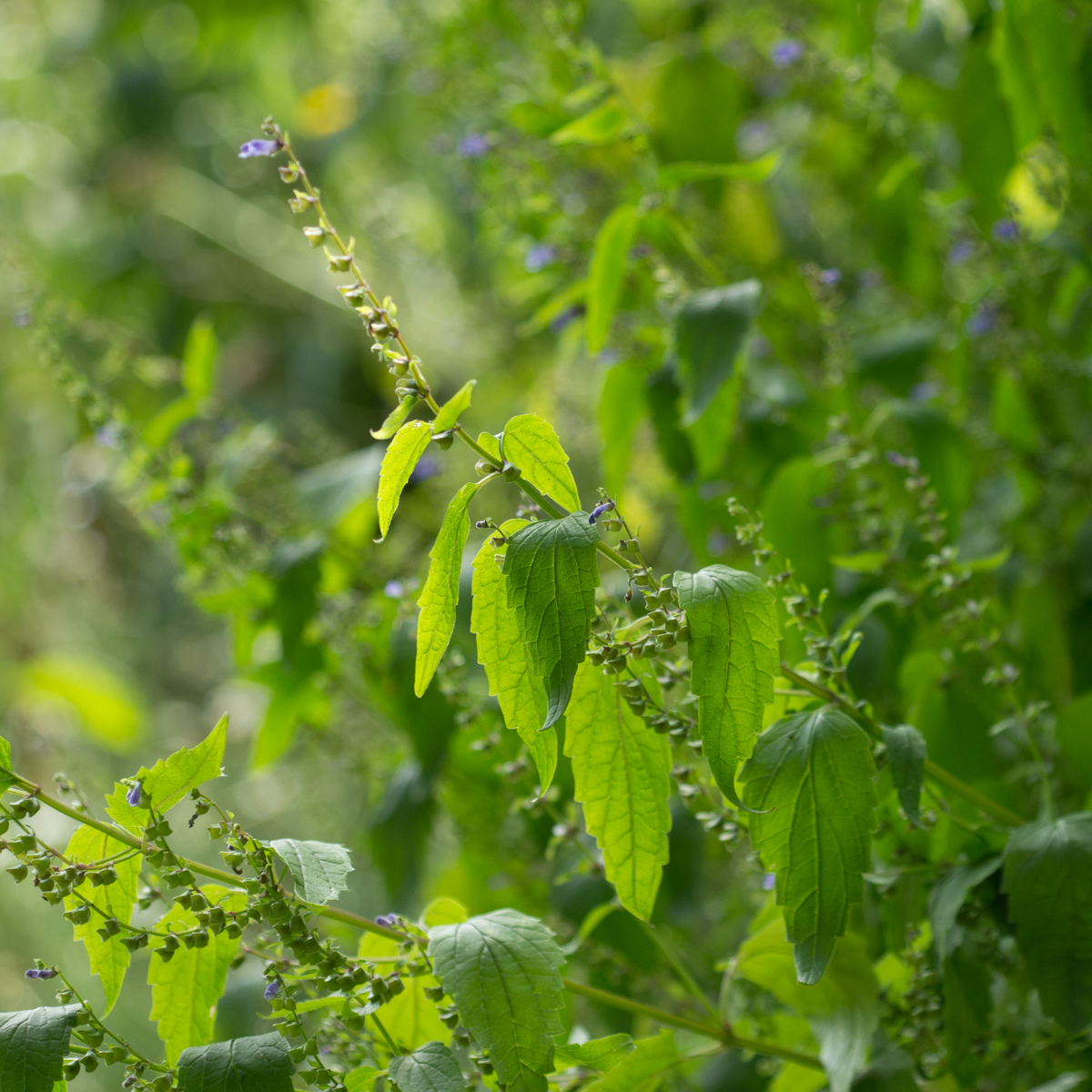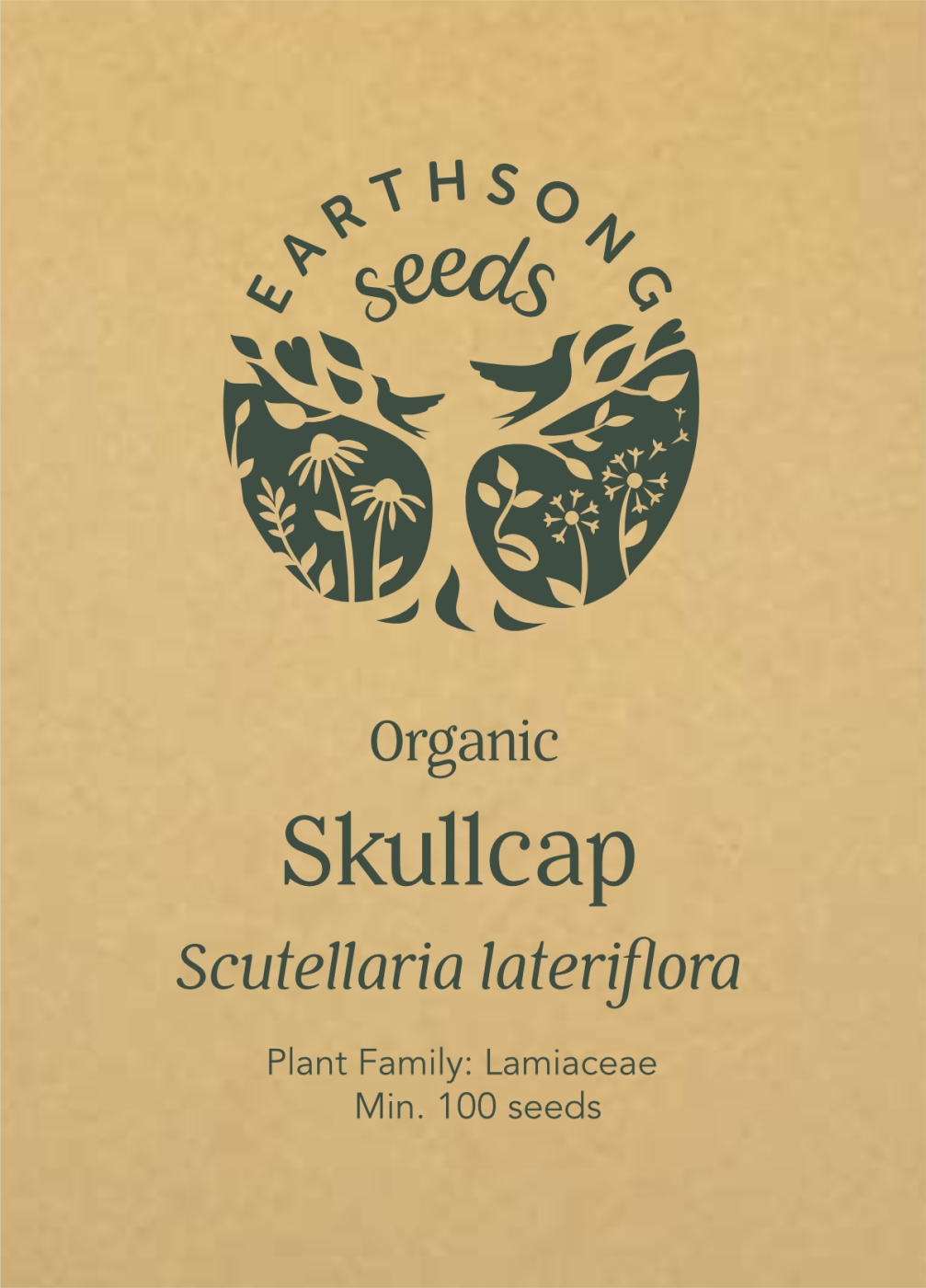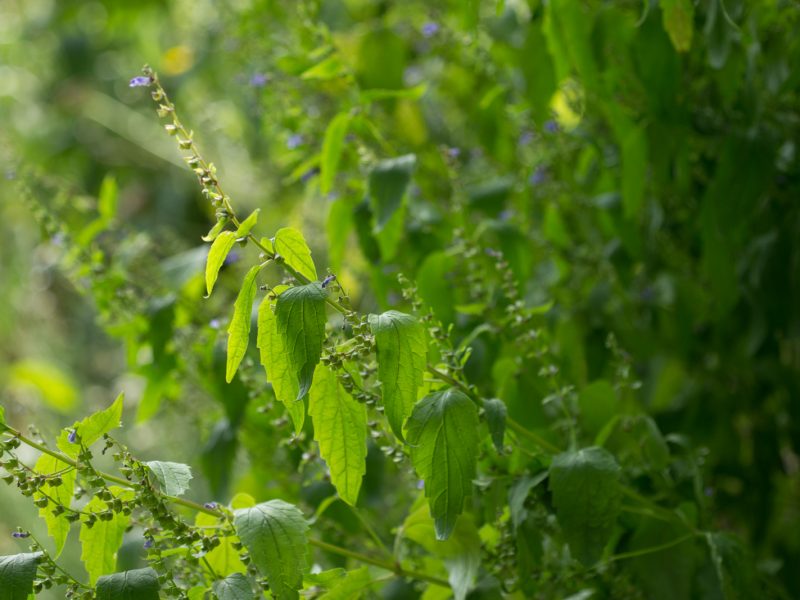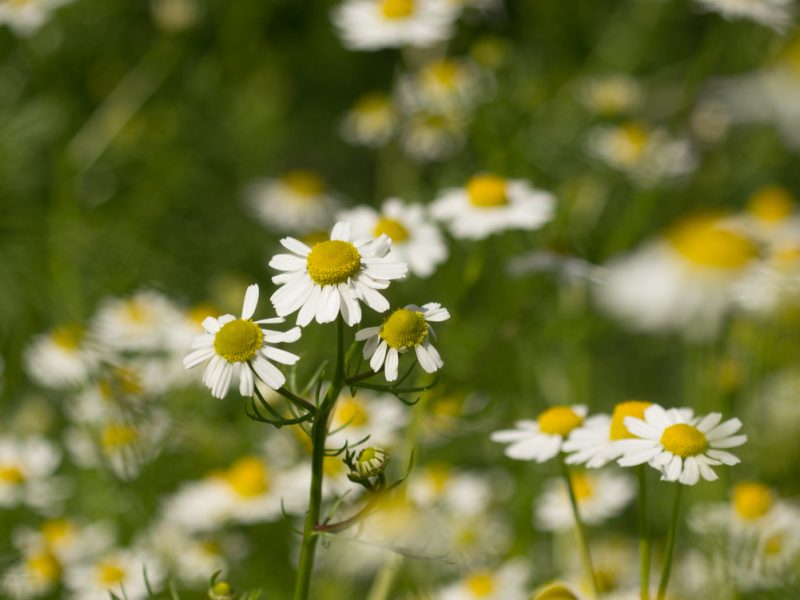There are three main skullcap species used in herbal practice; American skullcap (Scutellaria lateriflora), Baikal skullcap (Scutellaria baicalensis) and Barbat skullcap (Scutellaria barbata). They all look quite similar with small blue-violet flower and distinctive ‘skullcap’ shaped seed pods, however they are all used very differently in herbal practice.
American skullcap (Scutellaria lateriflora) is the most commonly used in Western Herbalism. Native to damp meadows and woodland edges in North America, it is best known for supporting the nervous system—helping to ease anxiety, restlessness and muscle tension. Its aerial parts are harvested in flower and used fresh or dried to promote relaxation and better sleep.
Baikal skullcap (Scutellaria baicalensis), also known as Huang Qin in TCM, has a very different profile. Growing naturally on dry, sunny slopes in northern China and Mongolia, it is one of the major “heat-clearing” herbs of Chinese medicine. The root is the part used, valued for its strong anti-inflammatory, antiviral and allergy-modulating properties. It is especially useful for hot, irritated conditions of the lungs, gut and liver.
Barbat skullcap (Scutellaria barbata), or Ban Zhi Lian in TCM, comes from the warmer, wetter regions of southern China and Southeast Asia. This species is traditionally used for clearing “toxic heat”—infections, abscesses, hot urinary complaints and inflammatory swellings. Both the aerial parts and root are used, and it is also known for its role in integrative cancer care due to its antiproliferative properties.
In summary, although closely related, these three skullcaps are used for quite different purposes: lateriflora for calming the mind and easing tension, baicalensis for cooling and soothing inflammation, and barbata for clearing heat and tackling more intense infectious or toxic states.




















Reviews
There are no reviews yet.